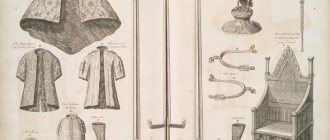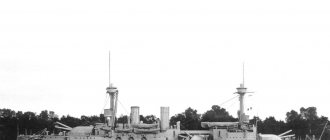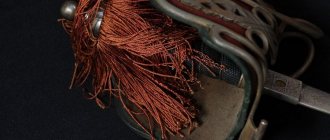One of the unique phenomena that medieval Europe gave birth to was the orders of knighthood. If the knights themselves were nothing special on a global scale (elite heavy cavalry, and nothing more), then the order of knighthood is already special!
Which of them were the most interesting and what is their brief history? After all, most people know nothing at all about many of them.
Order of St. Lazarus
It is also unique in that it included only lepers. Which knights are made from lepers? It turned out that they were not bad. At first they did not participate in battles, but a century after the founding of the order they took up this matter.
They wore black clothes with a green cross. They went into battle without helmets, horrifying their opponents with their disfigured faces. The move turned out to work, since no one wanted to catch leprosy.
However, the enemies still did not flee and, reluctantly, fought with the knights of St. Lazarus. In one of the battles of 1244, almost all the knights were killed, which broke the order.
Over time, it moved to France and continues to exist today, turning into a charitable organization.
How to become a Knight of the Order of Malta
Currently, members of the organization are divided into three classes, but only the first of them requires the knights to take vows of poverty, chastity and obedience. In theory, any Catholic or Protestant who wants to devote himself to humanitarian work can join the ranks of the Hospitallers. The order's volunteers work in hospitals and clinics, deliver charitable supplies to third world countries, and help the homeless and people with disabilities. Those who have especially distinguished themselves may eventually be offered knighthood.
Templars
The most top knightly order, fully deserving of its glory. After the Crusaders were expelled from Palestine, the knights switched to trade and banking.
However, it was still impossible to call them pathological money-grubbers. The Order built a lot, laid new roads (free ones at that!), which it itself guarded. A lot was spent on charity.
They were not forgiven for their incredible wealth, after which they were accused of all their sins. Confessions were extorted using the most brutal methods, and in 1312 the Order of the Templars was abolished. Subsequently, he was revived several times, but it was not the same at all.
A gift with a catch
Of course, Charles V made his generous gift, guided by more than just “Christian sympathy.” In order to understand all the insidiousness of the royal gift, one must understand what the Mediterranean Sea was like in the 16th century. It was a real snake ball - seething and deadly.
The entire Mediterranean was swarming with Barbary pirates, as people from the Muslim regions of North Africa were called. The harbors of Algeria, Tunisia, and Libya served as a haven for thousands and thousands of ferocious sea robbers who kept all of Southern Europe in fear.
The main target of their raids was the coastal settlements of Italy, Spain, Portugal, and France. These countries had a particularly hard time, although more distant states also suffered - Muslim corsairs even sailed to England, Ireland and Iceland!
Portrait of Pierre-Gerard de Martigues, nicknamed the Blessed One, founder of the order
The goals of pirate raids were simple: gold and slaves! Moreover, the hunt for slaves can even be put in first place. The Barbaries organized special raids, during which they combed the coastal European lands, trying to capture as many Christian captives as possible. The captured “live goods” were sold in the slave markets of Morocco, Algeria, and Turkey. Historians estimate that Barbary pirates captured and sold into slavery at least one million Europeans. And this was at a time when the population of Europe was not very large!
For large operations, scattered pirate squadrons were united into entire flotillas of dozens and hundreds of ships. And if you also take into account that the Ottoman Empire actively helped the pirates who were fellow believers, then you can understand the full extent of the danger to which Europe was then exposed. Having given the Hospitallers an island in the very center of the Mediterranean Sea, at the crossroads between Tunisia and Sicily, the emperor threw the knights into the very epicenter of a fierce battle. Willy-nilly, the Hospitallers had to serve as a shield for Europe against the onslaught of Muslim corsairs... They were quite capable of this. Moreover, they learned to resist pirate raids during the defense of Rhodes.
Order of St. Holy Sepulcher
Something like “United Russia”, only in a Catholic manner. This order was founded during the First Crusade and its task was to protect Palestinian shrines from Muslims.
Until 1949, only popes were grand masters of the order. Being a government order, the order has survived quite calmly to this day.
True, the “knights” of the order no longer protect any shrines and its members are representatives of the financial and administrative elite, simply the rich, as well as media, sports, and cultural figures. A sort of “Order of St. Majora” worked.
Reasons for the formation of the Crusader orders
At the beginning of the Middle Ages, a class of feudal lords called themselves knights was formed. But the rules of social order regulating relations between them have not yet been formed. Many feudal knights considered themselves equal to rulers (kings, dukes), which led to unrest within the newly formed states.
The younger sons of feudal lords, trained in the art of war from childhood, had no other means of livelihood except war. It was at this time that knightly armies began to form. But their discipline was extremely low.
The Roman Catholic Church tried to reduce tension in the states by directing the energy of the knights to a seemingly good cause - the liberation of nascent Christianity from Muslim rule. To do this, during the period from 1096
Between 1272 and
1272
, nine crusades were organized.
At the same time, orders began to be created that united crusading knights. The creation of orders pursued, first of all, the goal of disciplining the knights, uniting them to perform the most important task in an organization with a strict hierarchy under the control of the head of the Catholic Church - the Pope.
Structurally, the orders were divided into leadership:
— Chief (Grand) Master (or Grandmaster).
— On the ground, the units were controlled by priors, subordinate to the grandmaster.
— Commanders (commandants of castles and fortresses) were subordinate to the priors.
— Officials - marshals - were appointed to manage finances.
Ordinary members of the orders included cavaliers - knights who accepted initiation, and neophytes - knights who joined the order, but were not allowed to be initiated.
Although in some orders the structure was somewhat different. In many orders, knights took a vow of obedience.
In total there were more than 30 spiritual and military orders. Some, having existed for a short time, ceased to exist or became part of other orders.
Warband
I wrote about him in more detail in another article, but in short his whole story boils down to an attempt to create his own state in Eastern Europe and conquer the pagans and Orthodox Christians.
Although the order's resource base was perhaps more powerful than that of any other order, its affairs were uneven.
No “Drang nach Osten” came out of the metal-rattling Deutschen Soldaten. This is not to say that they were bad warriors, but they beat them regularly.
The real downfall was the Battle of Grunwald in 1410, where Polish-Lithuanian-Russian-Tatar forces scattered them to the winds. The test shot at the existence of the order was made by its own great masters, who one day simply went over to Protestantism, taking with them some of the knights.
Later, the order was revived several times, but again, it was not the same. Now it consists mainly of female doctors.
Members of the order and its charter
Only French (later English) of noble birth could become Knights of the Order. Only they could occupy the highest leadership positions ( grand master, masters of domains, capituliers, castellans, drapiers
and so on.). However, this was not strictly observed regarding nationality. Among the knights there are also Italians, Spaniards, and Flemings. Sergeants of the Order could be both rich townspeople (they held the positions of squires, accountants, managers, storekeepers, pages, etc.) and ordinary people (security guards, soldiers, servants).
Priests of the Catholic Church could become priests of the Order, however, upon joining the Order, such a priest became a member of the Order and was subordinate only to the Master of the Order and its highest dignitaries. The bishops of the Catholic Church and even the Pope himself were losing power over them. Priests performed spiritual duties in the Order, although the knights of the Order were endowed with the rights of confessors. Any member of the Order could perform his religious duties only before the order's priests (confession, communion, etc.).
The charter originally consisted of 72 articles in Latin. In the middle of the 12th century. it underwent some changes, primarily in those sections that related to issues of the structure of the Order. At the same time, the “Charter”, or “Code”, was translated into French. At the time of compilation of the Code, the rules of the Cistercian Order, to which St. himself belonged, were the most severe. Bernard: he took them as a basis when creating the charter of warrior monks.
Those who entered the Order took three vows: obedience, poverty and chastity. The Templar was obliged to unquestioningly and at any time carry out the orders of higher ranks. Retreat in battle without orders from the commander was certainly prohibited. If, after death, gold or money was found on a knight of the order, then the body was supposed to be buried behind the fence of the cemetery, and the deceased was considered an apostate. Any touching of a woman or communication with her was declared criminal, “for, as you know, the enemy of the human race led many astray with the help of women.”
. Even the filial desire to kiss his mother was condemned.
The only exception was the one whose image every Templar could freely look at with tenderness and unearthly love. Love for her and faith in her benevolence should inspire the templars in moments of mortal danger. This woman was the Virgin Mary.
Unfortunately, the scope of the material does not allow us to dwell in detail on the question of why the cult of the Mother of God (women, first of all) was developed in a community so isolated from women. This is a topic for a separate study. Let us only note that the latest edition of the “Charter” contains a touching phrase: “... the morning hours of the Mother of God should be read first in the House (order) ... since the Mother of God laid the foundation for our order, and in her and in her honor, if God wills, will be the end of our lives and the end of our order, when God wills such an end to come.”
.
Brotherhood of Warriors of Christ
Since the knights of this order wore cross-shaped images of a sword on their cloaks, they were nicknamed sword bearers. The task of the order was a kind of prequel to the history of the Teutons - to take control of the Eastern Baltic.
But the matter did not work out, because the Russian princes got in the way, and then Lithuania got it hard. They would have gone into oblivion, but instead the Swordsmen joined the Teutonic Order, becoming its branch, better known as the Livonian Order.
However, the change of name did not give anything, and in the middle of the 16th century the Livonians of the Sword were defeated by the Russians, and then, following the example of the Teutonic leadership, they converted to Lutheranism.
Order of Defenders of Christian Shrines (Order of Tau)
The order is considered the oldest of the spiritual knightly orders in Europe. IN 952
In 2010, in Altopascio (Spain), the monastic order of St. Augustine opened a hospital where pilgrims traveling to Santiago de Compostella or Rome stayed for rest and treatment. The monks of the Order guarded pilgrims along the route from Lucca to Genoa.
IN 1239
The Order was officially given military status. They did not seek leadership among other orders, although its hospitals were built in other countries.
IN 1585
The Order merged with the Order of St. Stephen.
A distinctive feature of the clothing of the knights of the Order was a black or dark gray cloak with a red hood. A white T-shaped cross is sewn onto the cloak and hood.
Order of Christ
Portuguese successor to the Templars, who appeared in 1318. It is also known for the fact that Vasco da Gama was a member of it.
From the latter, some make the assumption that the great navigator owes his successes to the knowledge about the structure of the world possessed by the Templars, who managed to hide their treasures so far away that they have not yet been found. By the way, the red cross on the sails under which da Gama sailed is the emblem of the Order of Christ.
At the end of the 18th century, the order was secularized, all its property was nationalized, that is, in other words, it was cleansed. Apparently, this is a European hobby: from time to time to rob everyone who called themselves Templars or their heirs.
Crusaders were knights of the early Middle Ages who dedicated their deeds to God. They got their name from the unique type of armor. The symbol of the cross was applied to armor, clothing and flags.
The Crusaders appeared in the 11th century, when the Church had a need to seize the eastern lands, primarily for economic reasons. The population of Europe was growing and there was a threat of famine, and the conquests of the Seljuk Turks posed a danger to Europe, as they came too close. So, it was decided to seize fertile lands in the East, and at the same time “return” the main shrine of all Christians - the Holy Sepulcher in Jerusalem. For the pious people of the Middle Ages, motivation could not be better. This is how knights arose, devoting themselves to the great goal of getting closer to God. The crusaders were invited to participate in the campaign to the east, washing away their sins with the blood of the “infidels” - Muslims, under whose rule the entire Middle East was, and representatives of other religions (including Orthodox Christians, because all the crusaders were Catholics).
The First Crusade in 1096 was a success. Antioch, Edessa and Tripoli were captured. During this time, the Kingdom of Jerusalem, the County of Edessa and the principalities of Antioch were formed. Edessa later fell back to the Muslim Turks, prompting a second crusade almost 46 years later. Similarly, expeditions to Palestine were made 9 times before 1272.
During the Crusades in Europe, anti-Semitic sentiments were especially strong, as Jews were considered guilty of the death of Christ. The calls of the holy fathers not to shed the blood of Gentiles, but to convert them to Christianity were completely useless, because why go on a long campaign if you can kill the enemy who is nearby?
The attitude of Catholics of that time towards people of other faiths was generally very hostile and cruel. Knights on campaigns destroyed anyone who was not Catholic, even Orthodox Christians. During the Northern Campaigns, the crusaders even attacked Rus'. The righteous swords of the monk knights and the Baltic pagan tribes were not spared. Finnish, Lithuanian, Karelian and other tribes suffered greatly from the army of defenders of the faith.
Many people think that the knights were primarily motivated by greed and the desire to enrich themselves from the wealth of the eastern lands. However, it is not. On the contrary, the knight had to spend a lot of money to participate in the campaign - equipment, provisions for himself and servants, maintenance of squires, etc. And all this throughout the entire campaign, that is, for several years. But all the costs paid off after the campaign, because the crusader knight was a respected person with a good reputation, which could help improve the financial situation and earn the trust of the townspeople and the church.
The last campaigns were not successful, and at the end of the 13th century the feudal states founded by the crusaders collapsed or were captured. In general, the campaigns did not bring anything good to the Europeans: only death, destruction and corruption of the concept of faith (before the First Campaign, participation in the war was condemned by the church, but after the war it became one of the ways to wash away sins).
Hypocrisy, cruelty, hypocrisy and double standards became the ideological basis of the “spiritually knightly orders.” The “Teutonic Order” and its inglorious history can serve as a textbook example of this. This makes a contemporary remember the events of 1242, when the German knights, having encountered the squad of Prince Alexander Nevsky and being defeated, sank to the bottom of Lake Peipus under the weight of their own armor. In fact, the Battle of the Ice is only a small fragment from the extensive history of the knightly order, which existed for three centuries as a full-fledged European state.
The history of the Teutonic Order began in 1189, when the German Emperor Frederick Barbarossa and his army took part in the Third Crusade.
At the end of August 1189, the army of the German emperor besieged the Syrian fortress of Acre, an ancient city founded approximately in the middle of the 2nd millennium BC. During the siege, merchants from Lübeck and Bremen organized a field hospital for the wounded crusaders. The King of Jerusalem, Guy de Lusignan, signed a charter, according to which the hospital was given the right to organize a hospice in Acre after the city was taken.
Pope Clement III, by his bull of February 6, 1191, proclaimed the hospital as the “Teutonic Brotherhood of the Church of St. Mary of Jerusalem.” On July 13, 1191, after an almost two-year siege, Acre was taken, and the field hospital moved to the city, already existing as a hospital monastery.
The position of the “liberators of the Holy Sepulcher” in the Middle East has always been unstable. That is why military functions were also assigned to hospital monasteries. In 1193, the same Guy de Lusignan entrusted the hospital with the protection and defense of one of the fortifications of Acre in the event of an enemy attack.
On March 5, 1196, a ceremony took place in the temple of Acre to transform the hospital into a spiritual order. At the end of the same year, Pope Celestine issues a bull, which recognizes the existence of the monastic Order of St. Mary of the German Jerusalem. The transformation of the hospital into a military monastic order was finally completed in 1199, when Pope Innocent III secured this status with his bull.
The tasks of the order are proclaimed:
- protection of German knights;
- treatment of wounded and sick crusaders;
- fight against the enemies of the Catholic Church.
The motto of the order: “Help - Protect - Heal.”
From this moment on, the order very quickly acquired its own regular army, and military functions in its activities became the main ones. Membership in the order, which is a military-religious community, becomes extremely prestigious among European feudal lords. And although the residence of the head of the order (grandmaster) is located in Acre, his possessions are rapidly growing in Europe - due to lands donated by monarchs, as well as the possessions of feudal lords who become members of the order.
The Teutonic Order, whose members had to be knights of German blood , which, however, was not always observed, very quickly gained strength, standing on par with the previously created orders of the Templars and Hospitallers. The order's charter divided members into two classes: knights and priests, who were required to take three monastic vows - poverty, celibacy and obedience, as well as promise to help the sick and fight unbelievers.
Unlike knights, who first had to prove their noble birth, priests were exempt from this obligation. Their function was to conduct religious services, administer communion to knights and the sick in hospitals, and participate in wars as physicians. The knights lived together, slept in bedrooms on simple beds, ate together in the dining room, and had a limited amount of money. They worked daily, training for battle, maintaining their equipment and working with horses.
The head of the order, like its other leaders, was elected, and his rights were limited to the knights - members of the order.
The fourth Grandmaster of the Teutonic Order, Hermann von Salza, was a man with a remarkable analytical mind. Several decades before the final collapse of the Crusader state in the Middle East, he realized that the Teutonic Order had no future in these parts, and began to make efforts to transfer its main activities to Europe.
Several attempts to gain a foothold in Europe were unsuccessful, but the stubborn grandmaster was persistent and brought his plans to the end. In 1217, Pope Honorius III declared a campaign against the Prussian pagans who had seized the lands of the Polish prince Conrad I of Mazovia.
The Teutonic Knights, having started a war against the Prussian pagans in 1232, used the following tactics - they defeated the Prussian tribal alliances opposing them one by one, while the defeated were used as allies in subsequent wars.
The order founded its castles on the occupied lands, consolidating itself in these territories “forever.” In 1255, Königsberg Castle was founded on Prussian lands. The Prussian nobility, finding itself under the rule of the knights and becoming their allies, gradually adopted Christianity. Gradually, the Germanization of the Prussian tribes also occurred - the German language, without which a successful career in the state of the Teutonic Order was impossible, supplanted the Prussian dialects.
Based on the edict of the Holy Roman Emperor and the bull of the Pope, Prussia became the possession of the Teutonic Order. Thus, the military monastic order, which absorbed and included similar smaller entities, turned into a whole state.
At the turn of the 1230s - 1240s, the Teutonic Order made an attempt to expand the borders of its possessions to the East by conquering the weakened Russian lands, which had just survived the invasion of Batu. The knights of the order intend to bring the local population, professing Orthodoxy, under the spiritual authority of Rome.
From 1240 to 1242, the knights of the Teutonic Order carried out territorial expansion in the Pskov and Novgorod lands, capturing Izborsk and Pskov. These territorial encroachments culminated in the Battle of Lake Peipsi on April 5, 1242, the results of which are well known to everyone.
Despite this setback, the order's influence continued to grow. The Teutonic Order waged a desperate struggle for territory with the Grand Duchy of Lithuania, which controlled most of the Russian lands in the 13th–14th centuries. In the 14th century, the order made more than a hundred trips to Lithuania, trying to subjugate it to its influence. Such activity of the Teutonic Order in Europe is explained by the fact that its activity in the Middle East ended in May 1291, after the capture of Acre by the army of the Sultan of Egypt.
In 1386, the Lithuanian prince Jagiello converted to Catholicism and became engaged to the heir to the Polish throne, which led to the creation of a personal union - the unification of two states (Poland and the Grand Duchy of Lithuania) under the rule of one crown. Subsequently, personal union will lead to the creation of a full-fledged united state - the Polish-Lithuanian Commonwealth.
For the Teutonic Order, which laid claim to Lithuanian lands, the Polish-Lithuanian union was a very serious threat. In 1409, a war broke out between the order and the new state association, the cause of which was old grievances. Poland and Lithuania, taking advantage of the uprising in the Zhemoytsky land, which previously belonged to the Principality of Lithuania, decided to try to recapture the territories previously captured by the knights of the order. The apotheosis of this war was the Battle of Grunwald, which took place on July 15, 1410. This battle, which became one of the largest and most important in the history of medieval Europe, ended in the defeat of the troops of the Teutonic Order. An important role in this battle was played by the regiments of the Russian lands that were part of the Grand Duchy of Lithuania, who showed courage and fortitude at critical moments.
The defeat for the Teutonic Order turned out to be crushing: out of a 25,000-strong army, 8,000 were killed, about 14,000 were captured. Among those killed were almost the entire military leadership of the order, as well as its knightly elite.
And although the war as a whole ended in 1411 on relatively mild terms for the Teutonic Order, its power was undermined. The destruction of his invincible army practically reduced his influence to nothing.
Huge material losses, the need to pay indemnities and ransom captured knights forced the Teutonic Order to introduce new taxes in the territories under their control, which caused indignation among the population. In March 1440, representatives of the small nobility and Hanseatic cities from the territory of the Order State organized the Prussian Confederation to throw off the dominance of the Teutonic Knights. In February 1454, the Prussian Confederation turned to the Polish king Casimir IV asking for support for their revolution and the inclusion of Prussia in Poland. The king agreed, which led to the outbreak of the Thirteen Years' War, also known as the "War of the Cities." The result of this war was the transformation of the western part of the order's former possessions into the Polish province of Royal Prussia, and the remaining eastern part of the order's possessions became a vassal of the Polish monarch.
The decline of the great history of the Teutonic Order stretched for several more decades and was very deplorable for the keepers of its traditions. The last Grandmaster, or Grand Master of the Teutonic Order, Albrecht Hohenzollern, disillusioned with his ideals, converted from Catholicism to Lutheranism in 1525, resigned as head of the order, announcing the secularization of the Prussian lands - the main territory that belonged to the Teutonic Order.
This decision was made with the approval of the King of Poland, whose vassal was the Master of the Order. In the former territories, the Duchy of Prussia was formed, headed by a “Master-Master”. This duchy became the first state in Europe whose religion became Protestant, despite the fact that it remained a vassal state of Catholic Poland.
The Teutonic Order, which had lost its influence, nevertheless retained control over some territories and officially existed until 1809, when it was dissolved during the Napoleonic wars. The order was revived in 1834 in Austria with the support of Emperor Franz I. There was no longer talk of military and political ambitions - the Teutonic Order returned to helping the sick and charitable activities.
The military traditions of the order were carefully preserved in Prussia, where the Order of the Iron Cross was even established, directly going back to the symbolism of the Teutons.
After the Nazis came to power in Germany, praise began for the military history of the order, primarily its attempts to conquer lands in eastern Europe. At the same time, persecution began against the priests of the real Teutonic Order, focused on charity.
After the end of World War II, the order's charitable activities continued. His current residence is located in Vienna. The residence contains unique historical archives on the activities of the Teutonic Order, which had a huge impact on the history of Europe.
Today the Teutonic Order operates several hospitals and private sanatoriums in Austria and Germany. An interesting point is that the basis of the modern Teutonic Order is not brothers, but sisters.
Even from a cursory historical sketch, the theme of degradation of the idea is obvious, which is based on the dubious postulate of the Teutons “The end justifies the means.” Modern clowns who dress up in the clothes and armor of Teutonic “knights” become even more comical. Incompetent imitation and puffing out the cheeks of the audience at the festivals they hold is, of course, a natural and logical result of the history of knightly orders in the presentation of modern losers. Clownery on the theme of chivalry becomes like an ordinary farce. Although history definitely teaches nothing to such people))
Hospitallers
Like many other orders, they had several names, the most famous of which is the “Knights of Malta”. Initially, this old order (appeared at the end of the 11th century) was supposed to take care of sick pilgrims to Jerusalem and the poor (which is essentially the same thing).
In the same century, the order switched to a military footing, taking up the defense of Jerusalem. The defense did not work out and then the knights moved to the island of Rhodes. Perhaps this is the most heroic order, since the way they stubbornly resisted the Moors already on the islands deserves respect.
However, they did not disdain finances, having collected enormous wealth by the 18th century. Well, when Napoleon came to Malta, he, of course, stripped the order to the bone. Like this: you stole a ruble and you are a criminal; if you take away millions, enthusiastic biographies will be written about you.
Mediterranean shield
The Knights of Malta fulfilled their mission with honor. Here is the answer to the question: “What are the Hospitallers famous for?” Many years of persistent struggle against the terrible Barbary pirates is what gave the order the right to historical immortality.
A paradoxical situation arose: the Knights Hospitaller wrote the most glorious pages in their history when the era of chivalry had actually come to an end. Knightly orders either ceased to exist (like the Templars), or abandoned any independent role, joining centralized states (like the Teutons). But for the Hospitallers, the 16th century turned out to be a truly “golden age”...
Having gained control of Malta, the Hospitallers challenged the thugs of North Africa. The Maltese created their own fleet, which became one of the key figures on the geopolitical “chessboard” of the Mediterranean. The once exclusively land-based order of knights and cavalrymen has now become an order of sailors. Serious changes were made to the order's charter: only those who had participated in the order's naval campaigns for at least three years could now become a full-fledged Knight of Malta.
Sultan of the Ottoman Empire Suleiman I the Magnificent twice tried to put an end to the knights. He almost succeeded once, but his second plan failed
Of course, there is no need to idealize the Knights of Malta. They fought the pirates using the same pirate methods. The extermination of entire settlements along with their inhabitants, cruel executions and torture, robberies and violence - all this was also in the practice of Christian knights. Such were the cruel customs of that time.
The Knights of Malta did not disdain to go out on the sea “high road” themselves: the leadership of the order in every possible way encouraged corsairship. Contrary to the vow of poverty that all members of military monastic orders took, ordinary knights were allowed to keep part of the loot for themselves. The master of the order even turned a blind eye to the slave market that existed in Malta (in this market, of course, it was not Christians who were sold, but captive Muslims).











